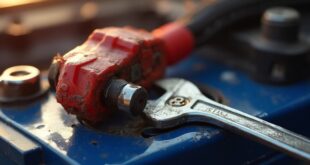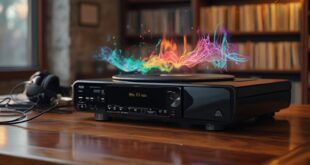If your vehicle won't start, stalls after ignition, or shows multiple dashboard warning lights, you might be facing a failing main relay. The engine may click without starting, or it might run briefly before dying. Electrical components could lose power unexpectedly, causing alarm on your dashboard. These signs are vital to address before they lead to bigger issues. Discovering what to do next can help you avoid further complications.
Unable to Start Vehicle
If your vehicle won't start, one of the culprits could be a failing main relay. You might turn the key and hear nothing, or the engine may just click without starting.
This issue often indicates that the main relay isn't supplying power to the engine control unit. A dashboard check engine light could also illuminate, signaling a problem that requires further investigation.
If the relay is faulty, it won't shift position when you turn on the ignition. Addressing this issue promptly can save you from further complications, so consider checking the relay as part of your troubleshooting process.
Engine Stalling
When your vehicle starts but then stalls shortly after, it can be frustrating and alarming, often pointing to a bad main relay.
You might experience several symptoms that indicate trouble:
- Engine runs for a few seconds before dying
- Difficulty restarting the vehicle
- Unexplained power loss to electrical components
- Unstable engine idle prior to stalling
- Unusual clicking sounds from the relay area
If you notice these signs, it's crucial to investigate further.
A malfunctioning main relay can disrupt power to critical engine components, leading to engine stalling and ultimately affecting your vehicle's performance.
Dashboard Warning Lights
Have you noticed multiple dashboard warning lights illuminating at once? This could signal a failing main relay. When the relay malfunctions, it disrupts power to essential systems, triggering various alerts on your dashboard. Here's a quick reference to common warning lights:
| Warning Light | Possible Issue |
|---|---|
| Check Engine Light | Engine control problems |
| Battery Light | Charging system failure |
| Oil Pressure Light | Low oil pressure |
| ABS Light | Anti-lock brake system failure |
If you see these lights together, it's time to diagnose the main relay and check for electrical issues.
Frequently Asked Questions
How Can I Locate the Main Relay in My Vehicle?
To locate the main relay in your vehicle, check the fuse box under the passenger side dashboard or in the engine bay. Look for labels or consult your vehicle's manual for precise identification.
What Tools Do I Need to Replace the Main Relay?
To replace the main relay, you'll need a flathead screwdriver, a ratchet set, and possibly a multimeter for testing. Make sure you have safety gloves and goggles on hand for protection while working.
Can a Bad Main Relay Cause Battery Drainage?
Yes, a bad main relay can cause battery drainage. If the relay sticks in the "on" position, it continuously powers components, draining your battery even when the vehicle is off. Check it out!
How Do I Test a Main Relay Without Replacing It?
To test your main relay without replacing it, you can swap it with a similar functioning relay. If the vehicle operates normally afterward, your original relay likely needs replacement. Otherwise, investigate other potential issues.
Are There Temporary Fixes for a Failing Main Relay?
If you suspect a failing main relay, you can try tapping it gently or wiggling the connections. Sometimes, this temporary fix can restore functionality until you get a proper replacement. Always prioritize safety during troubleshooting!
 Car Service Land Coupons for Oil change, Tires, Wheel alignment, Brakes, Maintenance
Car Service Land Coupons for Oil change, Tires, Wheel alignment, Brakes, Maintenance




